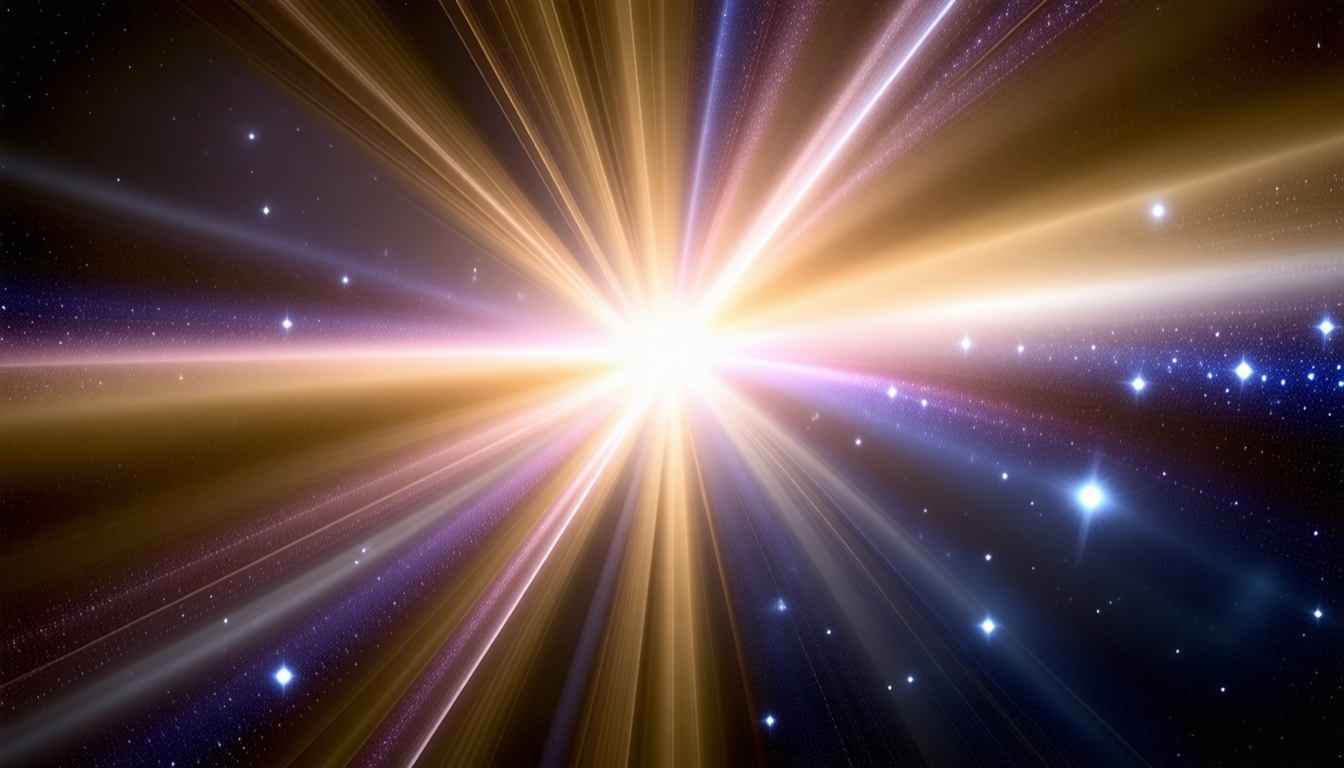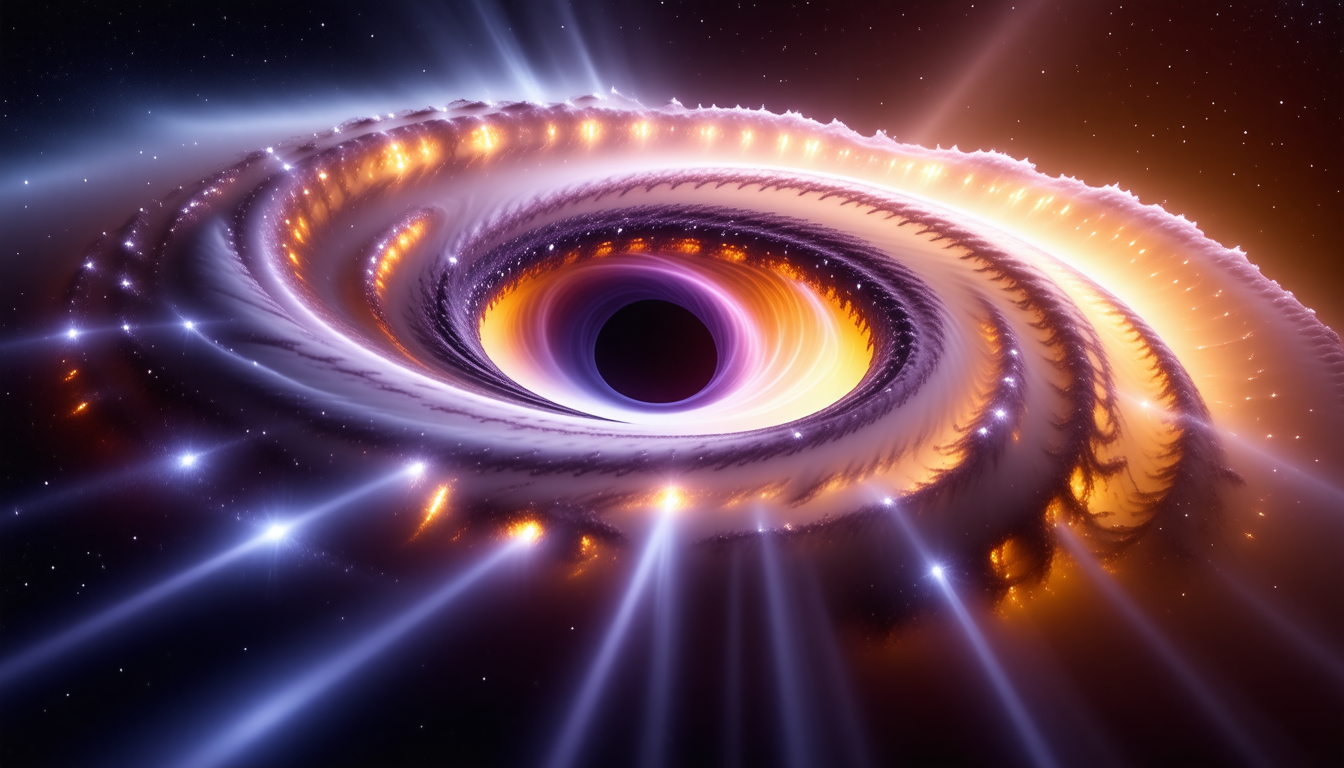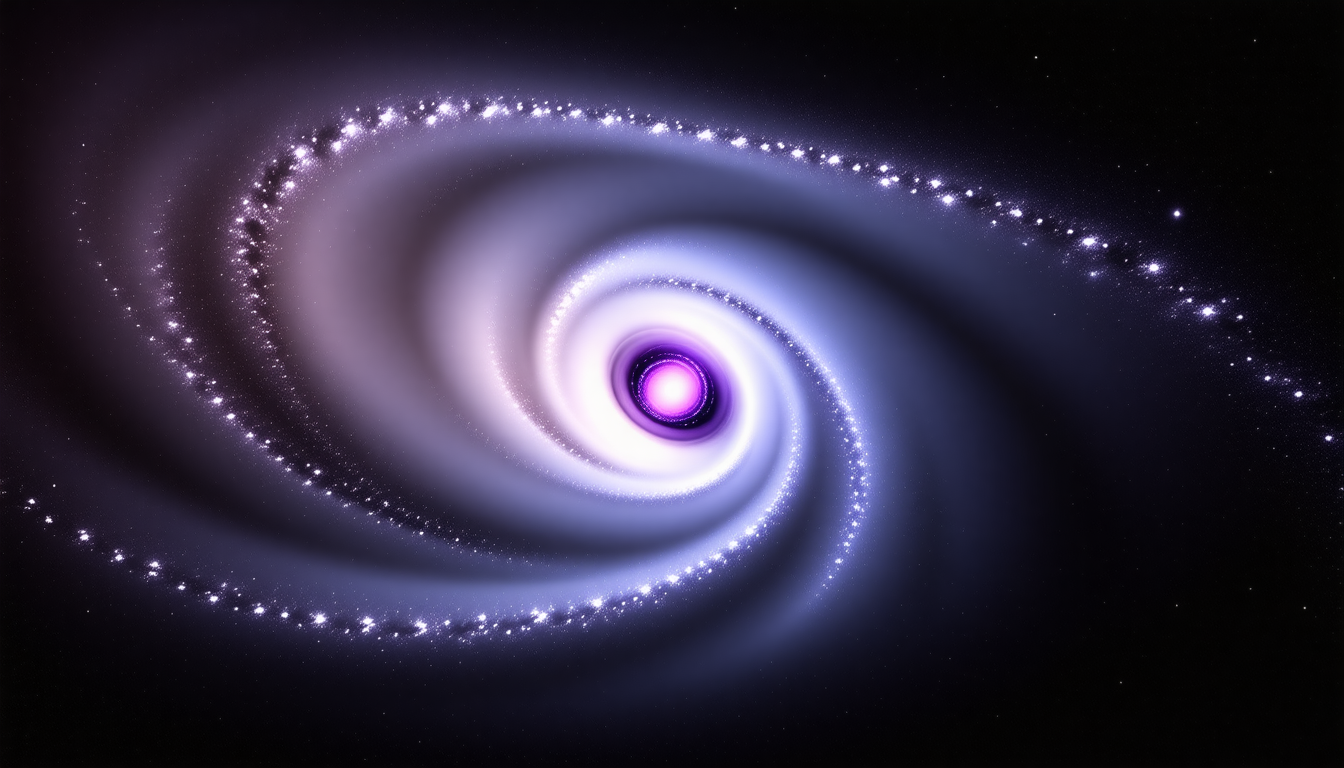Unveiling the Mysteries of Cosmic Anomalies

Fascinating Cosmic Anomalies and Their Mysteries
Enigmatic celestial phenomena grip our imagination and stretch the limits of our understanding within the vast cosmos. As we gaze into the depths of space, we are met with curious occurrences that challenge everything we ponder we know about the universe. From peculiar gravitational behaviors to strange bursts of radiation, cosmic anomalies beckon us to question the fundamental laws that govern the heavens. Every mystery serves as a cosmic puzzle piece, urging scientists to rethink current theories and explore the uncharted territories of astrophysics.
Among the most alluring mysteries are the fast radio bursts, or FRBs, brief yet intensely powerful flashes of radio waves that originate from distant galaxies. They manifest as sudden spikes in the radio spectrum, often lasting only milliseconds, yet the energy contained within each burst exceeds that of the sun over an entire year. While many of these bursts remain unexplained, researchers have speculated about their origins: could they arise from neutron stars, magnetars, or perhaps even the potential actions of extraterrestrial technologies? This tantalizing uncertainty invites a blend of creativity and scientific rigor as astronomers work to identify the elusive sources of these signals.
Moreover, the black hole represents one of the ultimate cosmic enigmas. Formed from the remnants of massive stars, these objects possess gravitational forces so potent that not even light can escape their grasp. The idea of the event horizon—the boundary around a black hole beyond which nothing can return—beckons endless curiosity. What lies beyond this threshold? Some theorists suggest that time behaves differently near a black hole, leading to profound implications for our understanding of causality and the very fabric of reality. The study of black holes not only illuminates their own characteristics but potentially unravels the nature of time, space, and what exists at the intersection of the two.
Astrophysicists are also captivated by the idea of gravitational lensing, an effect that occurs when the light from distant objects is warped around a massive structure, such as a galaxy or a black hole. This peculiar phenomenon allows scientists to “see” dark matter, the invisible mass that makes up a significant portion of the universe’s total mass. As light bends around these massive objects, it creates distortions that offer crucial insights into the distribution of dark matter and the structure of the universe itself. The detection of gravitational waves—ripples in the fabric of space-time caused by violent cosmic events such as colliding black holes—further deepens our understanding of these anomalies, marking the dawn of gravitational wave astronomy.
The cosmic microwave background radiation (CMB) serves as another significant cosmic anomaly, providing a snapshot of the universe just moments after the Big Bang. The CMB permeates all of space, and detailed measurements reveal slight fluctuations in temperature that represent the density variations in the early universe. These minute differences played a pivotal role in the formation of galaxies and the large-scale structure we see today. By studying the CMB, scientists decode critical information about the universe’s origins and its eventual fate.
Anomalous galaxies also capture our curiosity. Unlike the classic spiral or elliptical galaxies, these oddities exhibit irregular shapes and behaviors. Often resulting from gravitational interactions or collisions with other galaxies, their unpredictable nature sheds light on the cosmic dance of celestial bodies. For instance, certain irregular galaxies exhibit a frantic pace of star formation, with bursts of new stars emerging in chaotic patches. These unusual galaxies challenge our conventional understanding of how galaxies evolve, revealing diverse pathways shaped by the gravitational forces at play.
Lastly, anomalies such as ultra-diffuse galaxies defy traditional models of galaxy formation. These ghostly structures boast vast sizes yet contain very few stars, leaving scientists to consider how such entities can exist and maintain their coherence. Investigating their formation might illuminate the role of dark matter in galaxy evolution and challenge existing notions of how galaxies form through gravitational accumulation of ordinary matter.
The ongoing exploration of cosmic anomalies serves as a testament to human curiosity and our relentless pursuit of understanding the universe. Each discovery not only feeds our scientific appetite but also ignites a spark of wonder that inspires future generations to look up at the stars and dream of the possibilities that lie beyond. As we continue to unravel these mysteries, the potential for revolutionary insights into the nature of reality itself becomes ever more tantalizing.

The Role of Dark Matter and Dark Energy in the Universe
Dark matter is one of the most profound enigmas of state-of-the-art astrophysics, a hidden component believed to comprise approximately 27% of the universe’s total mass-energy content. Despite its overwhelming presence, it remains elusive, as it does not interact with electromagnetic forces, meaning it neither emits nor reflects light. This invisibility has far-reaching implications for our understanding of the cosmos. The existence of dark matter was first inferred from observations of galaxies that rotate at speeds inconsistent with the amount of visible mass present. This discrepancy suggests that unseen mass lurks in the galaxy’s halo, influencing gravitational dynamics. Scientists are eager to unravel its true nature, exploring various candidates for dark matter particles, such as weakly interacting massive particles (WIMPs) and axions, in hopes of shedding light on this cosmic shadow.
Accompanying dark matter in the cosmic tapestry is dark energy, a mysterious force believed to compose around 73% of the universe. Dark energy has been implicated in the surprising acceleration of the universe’s expansion. This discovery came from analyzing distant supernovae—exploding stars that serve as cosmic beacons to measure vast distances. Observations revealed that these supernovae appeared dimmer than expected based on their redshift, suggesting an accelerating expansion rather than a decelerating cosmos bound by gravity. The implications of dark energy are staggering, raising questions about the future of our universe: will it continue to expand forever into cold darkness, or will it ultimately collapse in a cosmic crunch?
Intriguingly, the interplay between dark matter and dark energy has profound implications for the fate of galaxies. Current models suggest that dark matter’s gravitational scaffolding provides the foundation upon which visible matter gathers to form stars and galaxies. In contrast, dark energy seems to drive galaxies apart, influencing their trajectories across the cosmos. This ongoing tug-of-war between attraction and repulsion creates a dynamic that shapes the architecture of the universe, illustrating the need for comprehensive models that incorporate the roles of both dark forms.
Understanding dark matter and dark energy serves not only to improve our knowledge of cosmic evolution but also allows us to refine our notions of fundamental physics. Observations of the cosmic microwave background radiation (CMB), a relic of the early universe, reveal slight temperature fluctuations that encode information about the universe’s energy content and density. These fluctuations help researchers determine the proportions of dark matter and dark energy that influence today’s cosmic structures. By studying the CMB in conjunction with the distribution of galaxies, scientists are constructing a more complete picture of how dark matter and energy unite to dictate the fate of the universe.
As new technologies advance our observational capabilities, we inch closer to potentially detecting dark matter directly. Projects like large underground detectors, particle accelerators, and future telescopes aim to bridge this knowledge gap, exploring interactions that could unveil the nature of dark matter. Meanwhile, the enigmatic dark energy remains a challenge, spurring investigations into alternative theories that may redefine our understanding of gravity itself.
In conclusion, dark matter and dark energy are not merely cosmic curiosities; they’re fundamental components of our universe that compel us to rethink existing frameworks of astrophysics. Their roles are intertwined, influencing everything from the formation of galaxies to the ultimate fate of the cosmos. As we continue to decode the mysteries surrounding these elusive entities, we gain not just insights into the workings of the universe but also a deeper appreciation of our place within the stellar expanse, navigating the unknown with curiosity and a quest for understanding that will define future explorations.

Unraveling the Secrets of Celestial Events and Structures
Celestial events are not merely isolated phenomena but rather intricate occurrences that weave the tapestry of the universe’s evolution. Each event offers a unique window into the processes that govern cosmic behavior, from the explosive deaths of stars to the gentle formation of new celestial bodies. Understanding these events can illuminate the fundamental laws of physics, while also revealing insights about the life cycle of galaxies and the very nature of the cosmos itself. One of the most exhilarating realms of study within this domain is that of stellar explosions, particularly supernovae. These dramatic cosmic fireworks are pivotal milestones in the life cycles of stars, marking the explosive end of a star’s life, often from a massive progenitor that has exhausted its nuclear fuel. Their brightness can outshine entire galaxies for a brief period, enabling astronomers to observe them at vast distances. The study of supernovae not only unearths details about their progenitor stars but also provides crucial information about the elements produced during these massive explosions, which ultimately enrich the interstellar medium and play a role in the formation of future stars and planetary systems.
Moreover, supernovae, especially Type Ia supernovae, have become standard candles in cosmology. Their consistent peak brightness allows scientists to measure cosmic distances with remarkable precision. This ability to gauge distances has led to groundbreaking discoveries regarding the accelerated expansion of the universe, prompting theories surrounding dark energy. Observations of distant supernovae revealed that their light had undergone redshift, indicating not only how rapidly they were moving away from Earth, but also contributing to our current understanding of cosmic evolution. By dissecting the various components of supernova remnants, scientists glean insights into everything from neutron star formation to the dynamics of black holes.
Equally significant are gamma-ray bursts, which represent some of the most energetic and enigmatic events in the universe. Originating from the collapse of massive stars or the merger of compact objects like neutron stars, gamma-ray bursts emit intense radiation that can last from milliseconds to several minutes. When these bursts occur in the direction of Earth, they can flood our planet with gamma rays—brief flashes that provide valuable information about the processes occurring in their source regions. The immense energy release during these bursts offers insights into the formation of black holes and the violent dynamics of stellar evolution. Interestingly, the study of gamma-ray bursts is effectively a glimpse into the conditions present during the universe’s infancy, as many are tied to the early stages of star formation and the development of galaxies.
Interstellar clouds and nebulae further enrich the story of cosmic evolution. These dense regions of gas and dust serve as stellar nurseries where gravity coalesces material to form new stars. Within the swirling clouds of Orion or the Pillars of Creation, we witness the delicate interplay between gravity, pressure, and radiation that shapes the formation of stellar systems. Studying these regions helps astronomers formulate models of star birth and informs our understanding of the processes that lead to the emergence of planets. These cosmic environments reflect the dynamic nature of matter in the universe, emphasizing the cycles of destruction and creation that characterize celestial evolution.
Globular clusters, the dense collections of ancient stars orbiting galaxies, present another key aspect of understanding cosmic structures. Their study provides profound insights into the histories of galaxies, as these clusters contain some of the oldest stars in the universe. By analyzing their chemical compositions and stellar populations, astronomers can glean vital information about the early conditions in the universe and the processes that shaped the formation of galaxies. The dynamics of globular clusters exemplify how gravitational interactions and stellar evolution converge to influence a galaxy’s morphology.
As we delve deeper into the secrets of celestial events and structures, we uncover the rich narrative that binds the universe together. Each event and entity, whether a supernova lighting up the night sky or a distant galaxy illuminating the cosmic web, adds a layer of complexity and beauty to our understanding of the cosmos. The insights gained from these events not only enhance our grasp of astronomical phenomena but also inspire future generations to explore, question, and appreciate the intricate and awe-inspiring universe we inhabit.